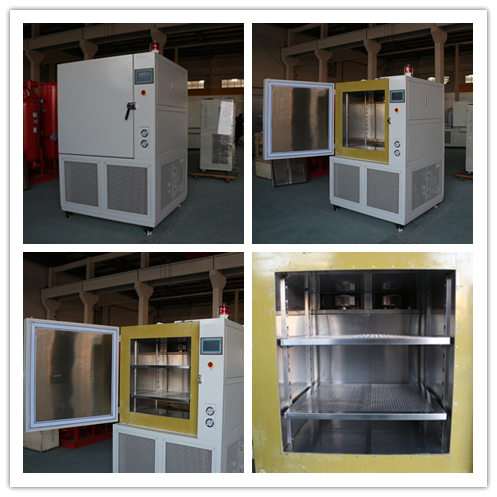Reasons for the decrease of heat transfer effect of vertical ultra-low temperature refrigerator
If the outer frost layer of the vertical ultra-low temperature refrigerator is too thick or excessively dusty, it can be caused because the external temperature of the evaporator is mostly lower than 0 °C, resulting in low heat transfer efficiency of the evaporator. Because the vertical ultra-low temperature refrigerator has relatively high humidity, the moisture in the air is easy to frost on the surface of the evaporator, and even freezes, which affects the heat transfer effect of the evaporator. In order to prevent the outer frost layer of the evaporator from being too thick, it needs to be timely Defrost.
There are two convenient defrosting methods: stop defrost, that is, stop the compressor operation, open the vertical ultra-low temperature refrigerator door, let the temperature rise, and then restart the compressor after the frost layer is automatically melted. Another is the cream. After the articles in the vertical ultra-low temperature refrigerator are carried out, the surface of the evaporator tube is directly washed with tap water having a relatively high temperature to dissolve or fall off the frost layer. In addition to the excessive frosting, the heat transfer effect of the evaporator is not good. The appearance of the evaporator is too thick due to temporary uncleaning, and the heat transfer efficiency is also significantly reduced.
Vertical ultra-low temperature refrigerators have poor heat insulation and heat preservation effects, which can also lead to poor heat transfer effect, poor heat insulation and heat preservation effect, and poor heat insulation performance because the thickness of the insulation layer of the pipeline is insufficient. Mainly due to the improper selection of the thickness of the insulation layer when designing the vertical ultra-low temperature refrigerator or the poor quality of the insulation data during construction. In the process of construction, the insulation moisture-proof function of the insulation data may be destroyed, resulting in moisture, deformation and even erosion of the insulation layer. The heat insulation capacity is reduced, and the loss of the anti-cooling capacity of the vertical ultra-low temperature refrigerator is increased, and the decrease is significantly slowed down.

Another important cause of large loss of cooling is the poor sealing performance, and more hot air invades the vertical ultra-low temperature freezer from the leak. Generally, if there is condensation on the seal of the refrigerator door or the seal of the cold storage wall, it means that the seal is not tight. In addition, frequent switching of the vertical ultra-low temperature refrigerator door or more people into the vertical ultra-low temperature refrigerator will also increase the cold storage loss of the warehouse. The vertical ultra-low temperature refrigerator door should be prevented from being opened as much as possible to prevent a large amount of hot air from entering.
These look to help the staff of the vertical ultra-low temperature refrigerators to work with friends, for detailed work conditions and maintenance instructions.
 LNEYA Industrial Chillers Manufacturer Supplier -
LNEYA Industrial Chillers Manufacturer Supplier -












